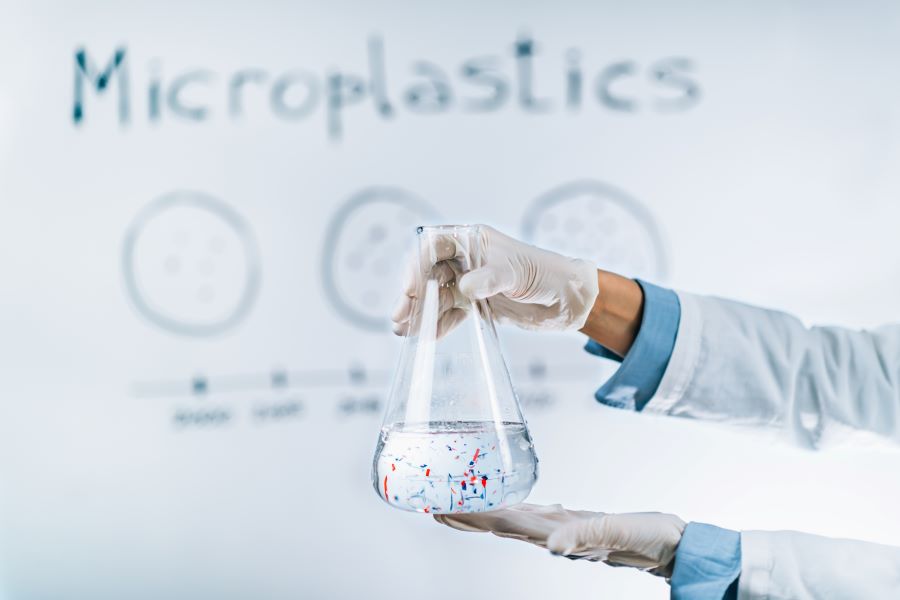
Researchers found that one UK facility discharged somewhere between 59 and 1,184 metric tons of microplastics in a single year. | Microgen/Shutterstock
Research from the UK found that plastic recycling facilities are discharging microplastics into water systems and suggested both further research and stronger wastewater filtration systems to address the pollution.
Researchers recently published the pilot study in the Journal of Hazardous Materials Advances. It’s one of just three published studies on microplastics in recycling facility wastewater. The other two, both published in 2022, were conducted in China and Vietnam. All three had comparable results, the 2023 study noted.
“While it is acknowledged the results present insight into one recycling facility in one location, it highlights the need for further future research into considering the potential of PRF to be a point source of MP pollution, the impact of plastic recycling facilities beyond their recycled product and facilities design to include mitigation measures for wash water to prevent receiving water pollution,” the study noted.
In a statement to WIRED magazine, Judith Enck, president of Beyond Plastics, said the study highlighted existing concerns about plastic pollution and its threat to human health, and “points to the fact that plastics are fundamentally not sustainable.”
Enck wasn’t involved in the paper.
Kara Pochiro, spokesperson for the Association of Plastic Recyclers, told WIRED when it’s “either economically or technically required, the recycling plant will install a water pretreatment plant that partially treats the water in order to remove some of the burden from the municipal plant.”
The Association of Plastic Recyclers (APR) was also not involved in the study. APR owns Resource Recycling, Inc., which publishes Plastics Recycling Update.
Study details
The research, performed at a plastics recycling facility in the UK that handles 22,680 metric tons of mixed plastic annually, found that filtration at a 5 micrometer level is necessary to prevent most discharge into water systems.
Because it’s a pilot study, the estimates for just how much microplastic was being discharged made up a broad range. The researchers estimated that anywhere between 59 and 1,184 metric tons of plastics less than 5 micrometers large were discharged annually from the one facility.
“No legislation or standard exists within the UK – the country of study – to control the release of MPs into the environment from controlled activities,” the report noted, with the authors adding that it “may be important to integrate microplastics into water quality regulations.”
Prefiltration samples showed nearly double the microplastics than post-filtration samples, the study found, but the filtration methods installed still did not catch the smaller particles. They caught about 90% of larger particles, those 10 micrometers and larger.
The authors suggested installing filtration better suited to smaller particles after the rotating drum and knife mill wash tanks and that the separation system and the compounding and pelletization wash tanks require additional filtration aimed at smaller particles, in addition to the filtration already at those locations.
Without any filtration, the report estimated the facility would discharge between 96 and 2,933 metric tons of microplastics per year. With greater filtration, that estimate drops to between 4 and 1,366 metric tons per year. With the level of filtration the facility currently has, between 59 and 1,184 tons of microplastics are discharged annually, the report approximated.
Based on the tonnage the facility handles, that’s about 13% of the total plastic amount discharged with no filtration or 6% with filtration, using the high end of the estimates.
The project was funded by grants from the Leverhulme Trust, Carnegie Trust and the European Union’s Horizon 2020 Research and Innovation program.



